by Dominique Nahas
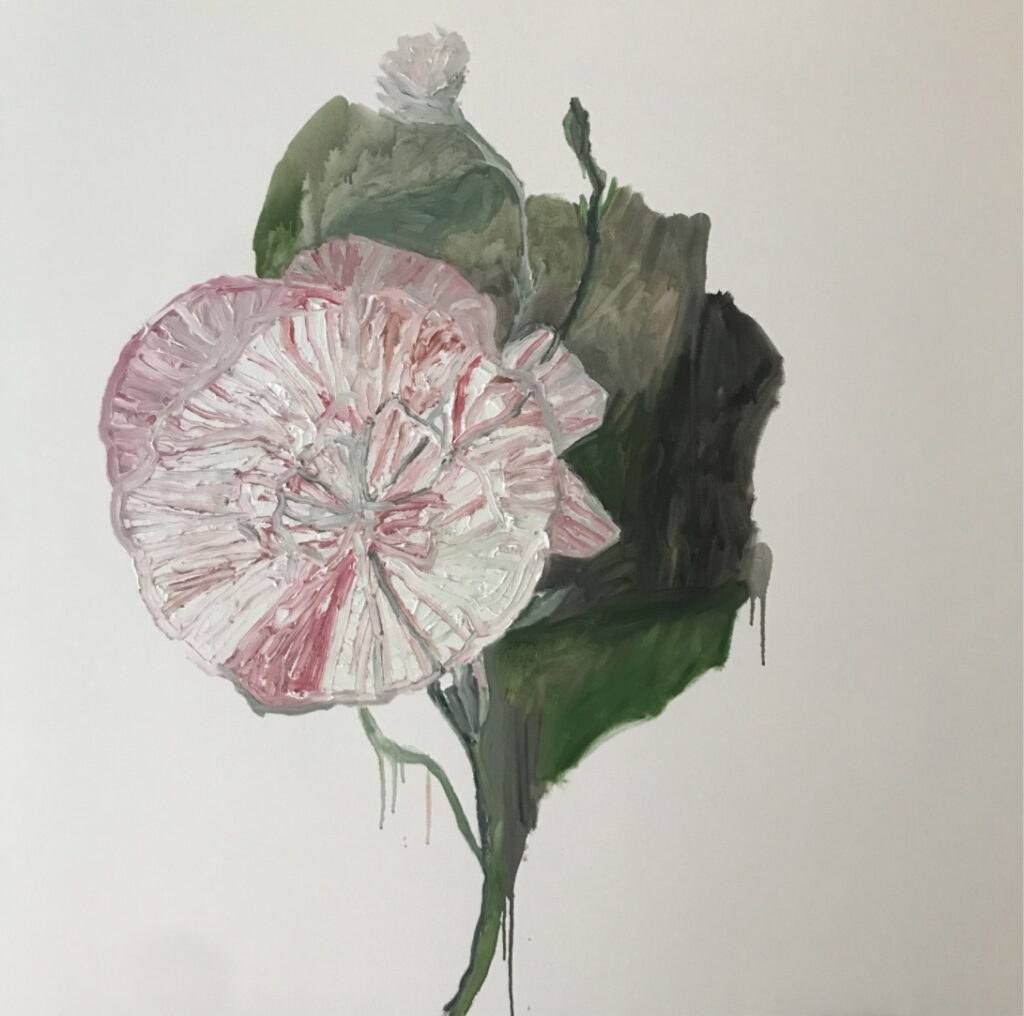
It’s the sense of exaltation, the sense of revealment (or un-concealment, as Heidegger would put it) in Margaret Evangeline’s work that always triggers a lot of emotions in me. This calling-forth tone indicates. It doesn’t state or designate. Evangeline’s art rests halfway, poised between a point of revealment leavened with a sense of the untold, the unresolvedness of it all. This tone has an undeniable presence to it that is in itself a manifestation that allows a polyphony of feeling tones to emerge from the work.
In his text “The Alchemy of Imagination” Gaston Bachelard refers to “…the law of ambivalence which sets into play the movement of the imagination…[A] matter which does not elicit a psychological ambivalence cannot find its poetic double which allows for endless transpositions. It is necessary…to have a double participation …of desire and fear, …of good and evil, of… black and white- for the material element to involve the entire soul. …In the realm of imagination there is no value without polyvalence…”
This calling-forth aspect of ambivalence is the rapturous aspect of Evangeline’s aesthetic vision. That equivocal vision is sustained in the whorls of painterly activity that suggests the opening and flowering of the camellia-flower that she has used for some time now – as the MacGuffin, so to speak, that lies at the off-center of her work. That off-centering, with its productive fragrance of mystery is not fixed within a point of conclusion. That involuted point turns in on itself. So much so that paradoxically, as all great work, Evangeline’s art has a sense of inevitability about it; as if, somehow, it could not be any other way. That “way”, as “path” (methodos is the Greek word), sustains chaos and cosmos equally.
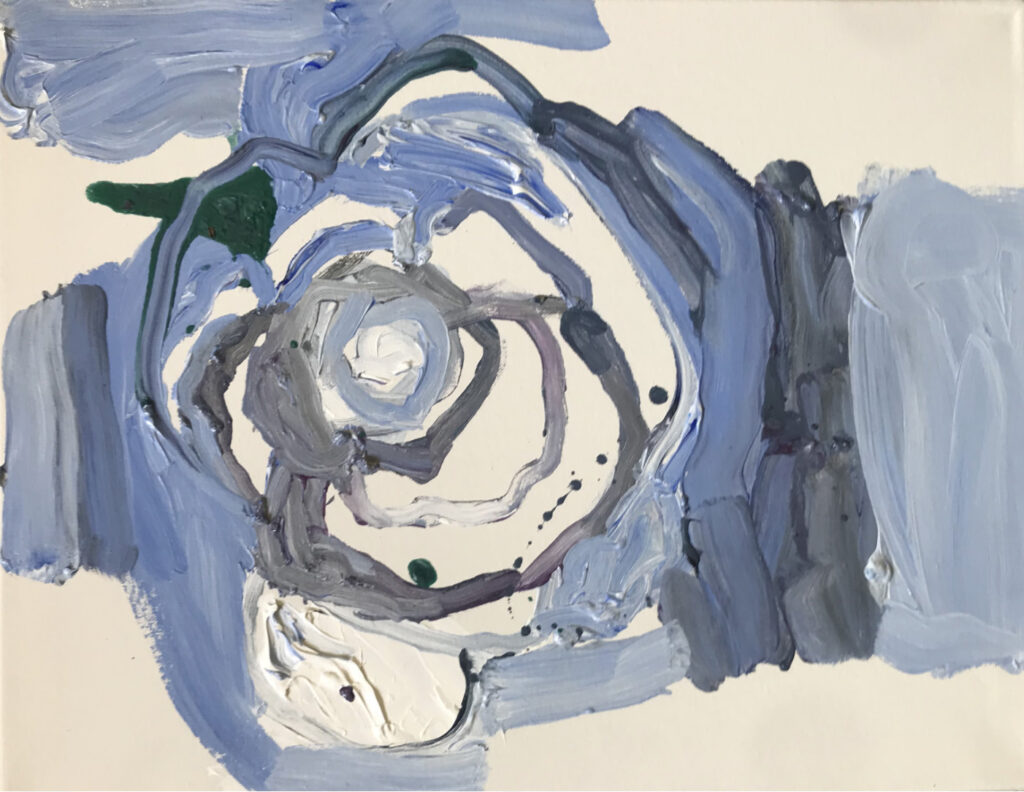
To that point Bachelard, in his 1943 text “L’air et les songes “(“Air and Dreams”) writes on poetic expression and its grounding in what he calls “…the immanence of the imagination in the real, the continuous passage from the real to the imaginary.” Bachelard makes remarks that go to the heart of Evangeline’s aesthetic. This inclination is that of trying to fuse differences, of exalting destruction as part of creation, of trying to emerge in a new creative place that is altogether indefinable. We see and feel these tendencies in her paintings such as “For LMG, Yellow Rooms Maker Her Cry, Version Two” (2019), and “Blue Reef” (2021). Bachelard writes: “…Imagination is always considered to be the faculty of forming images. But it is rather the faculty of deforming the images (my italics) offered by perception, of freeing ourselves from the immediate images; it is especially the faculty of changing images. The value of an image is measured by the extent of its imaginary radiance. Thanks to the imaginary… the imagination is essentially open, evasive. In the human psyche it is the very experience of openness and newness…” Evangeline’s paintings such as “Disintegrating Camelia with Pink Aura #1” ((2018), “Disintegrating Camelia with Pink Aura #2”, (2018), and “Language 1” (2019), present us with vestiges of an evasive essence.
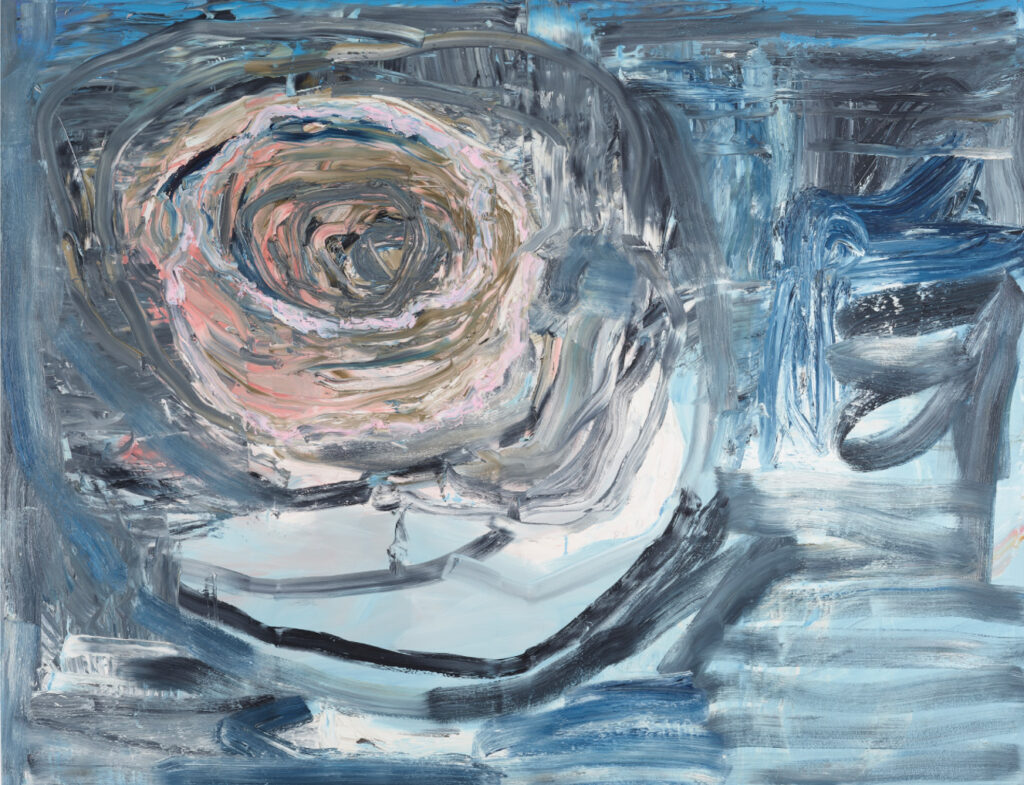
This calling-forth manifestation of newness within Margaret Evangeline’s work is what makes it so seductive. The non-finito energies that course through her recent work reinforces these energies. Paintings completed in 2021 such as “A Certain Dianthus”, “Rose”, “Irises”, “Iris” are good examples of this position of non-conclusiveness. The seemingly unfinished aspect is poignant, reminding us of our mortality. John Berger’s comment in “Once in A Painting” one of his essays in the 1984 collection entitled “And our faces, my heart, brief as photos” is apt. He writes: “When is a painting finished? Not when it finally corresponds to something already existing… but when the foreseen ideal moment of its being looked at is filled, as the painter feels or calculates it to be. The long or short process of painting a picture is the process of constructing such a moment.” Later in his essay he calls this moment the “painting’s moment-of-being-looked-at.” Evangeline’s calling-forth energy entices the “painting’s moment-of -being-looked at.” It is advanced through the pursuit of presence of her work and as her work.
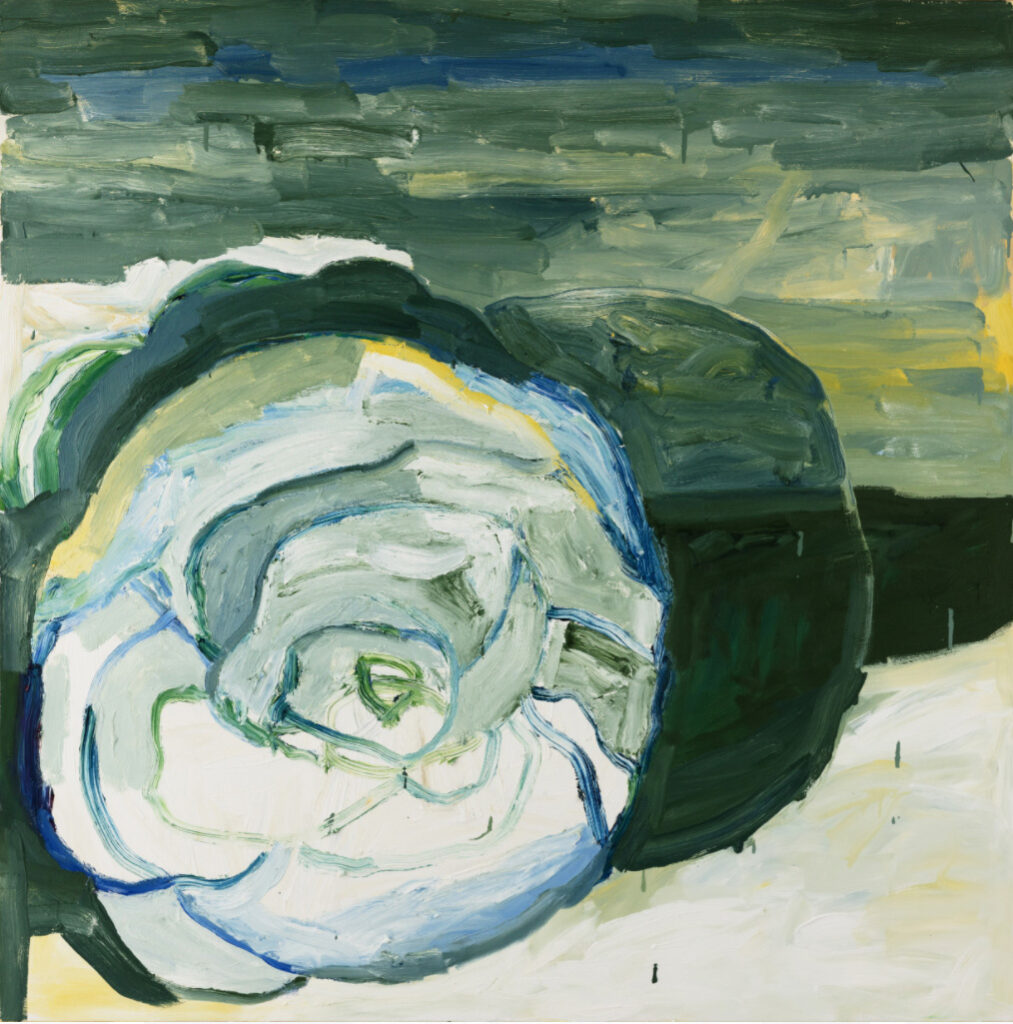
In Jean-Luc Nancy’s “The Birth to Presence” he sets it right. He writes: “…Consider this canonical definition of the imagination: “the representation of a thing in its absence.” Usually we take it to mean “while the thing is absent, is elsewhere.” But what if we were to understand: the presentation of a thing within its absence, going to the heart of this absence, penetrating into, and abandoning itself unto the infinite hollow of presence whence presence comes? “Image,” here, means rather the emotion of a coming into presence, coming from no presence, going to no presence.” … Painting presents presence and always, saying nothing, says: here is this thing, and here is its presence, and here is presence, absolute, never general, always singular. Presence which comes, the coming into presence, the coming-and-going, ceaselessly coming and going from its own discreteness to the discreteness of every time that is “proper” to it. …There is no such thing as presence proper, there is only the coming and going of presence…”
Keeping this in mind, Margaret Evangeline’s artistic practice, then, can be understood and experienced as her activity of attempting to go to the very heart of this “hollow” of presencing. As a result, the sensuousness of her mark-making and form-making is as undeniable as its presencing. Margaret Evangeline’s art is a manifestation of the liminal moment of an encounter with absence. Through that absence we sense a longing for a thing that is the never-to-be-accounted-for thing. Evangeline’s paintings such as “35,001 Roses” (2010-15) and “Heloise and Abelard’s Last Love Letter” (2018) are tinged with wistful irreconcilability.
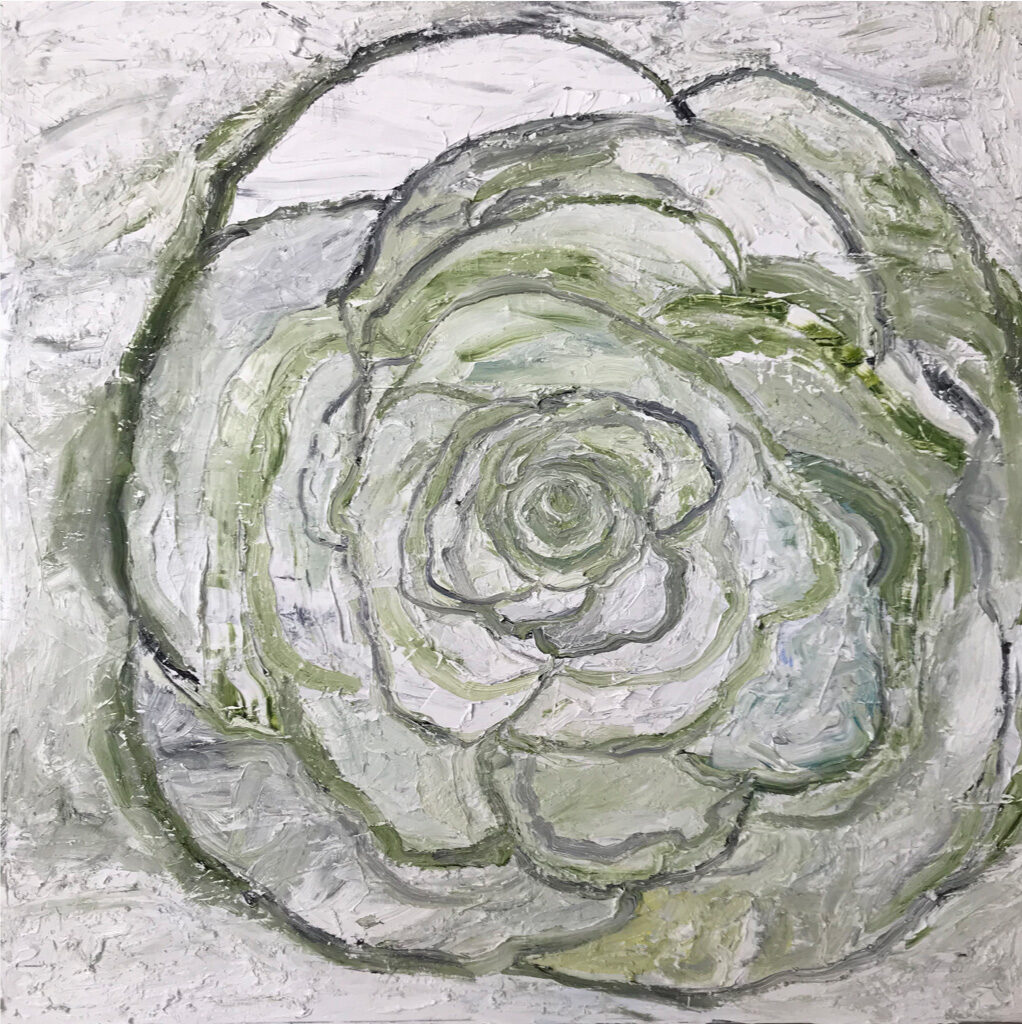
Another vital aspect of Evangeline’s vision is how impactful it is; the art she makes is apparitional. We see and feel this incantatory measure in her works such as “Dream Series #1(a)” and “Dream Series #1(b)” (both 2021), and “Shift #1”, (2012-2016). Gilles Deleuze, in Difference and Repetition, remarks: “Something in the world forces us to think. This something is an object not of recognition but of a fundamental encounter.” (Deleuze’s italics.) Deleuze points out that an object of recognition is a re-presentation of something already in place. By contrast encountering in itself operates as a rupture in our usual habits, those that serve to confirm our subjectivities. The encountering presence itself offers affirmation of being in the world, of the world, differently, without an a priori, as a not-known. Deleuze’s insights here seem to be echoing his philosophical progenitor Maurice Blanchot. In The Infinite Conversation Blanchot writes : “This means that to think the unknown is in no way to propose it as “the not yet known,” the object of a knowledge still to come, any more than it would be to go beyond it as “the absolutely unknowable,” a subject of pure transcendence, refusing itself to all manner of knowledge and expression…research relates to the unknown as unknown…this relation will not consist in an unveiling. The unknown will not be revealed but indicated.”
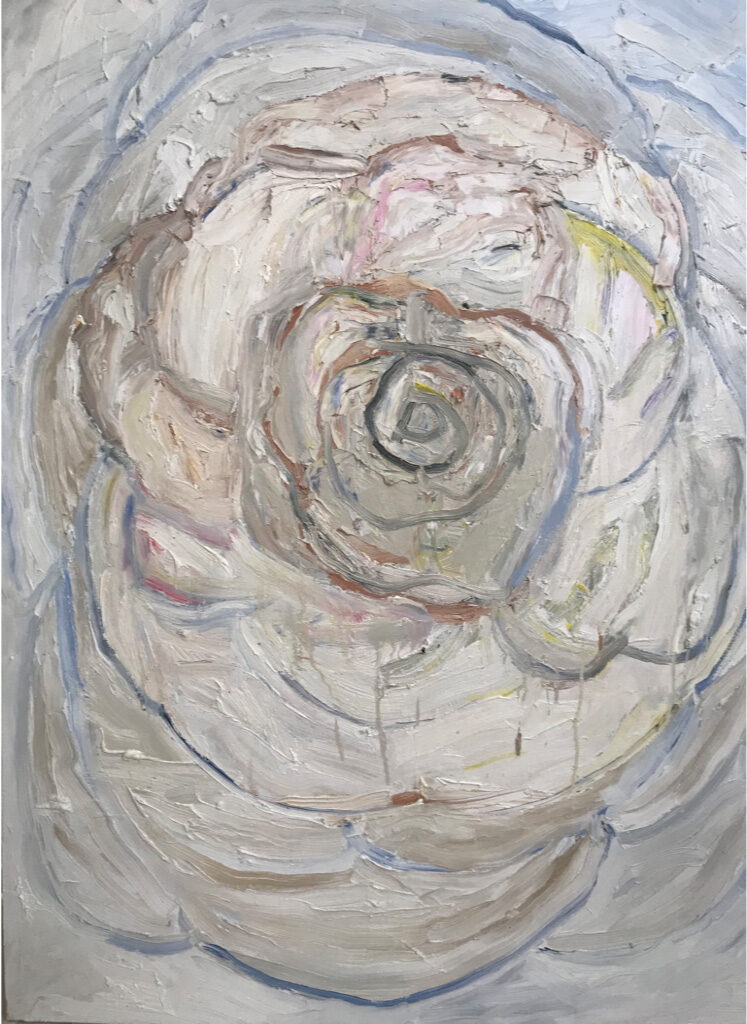
Margaret Evangeline’s excursions into her floral motifs are a fine placeholder for those who cannot help themselves in wanting to identify the recognizable. These shape-shifting floral traces of identification allow Evangeline cover, so to speak, as she enters into her worlds of poetry. The artist’s “Red Resurrection” (2010), “The Clementine Vulgate” (2019), and “Lady Macbeth” (2021), for example, lead us to experience mark-making, forms and colors where cosmos with chaos intertwine. We sense pursuit of an encounter with presence that is the never-to-be-accounted-for, some-thing un-knowable. Such a brush with presence eludes detection, prevents its very identification as some-thing certifiable. An elision between the seen and the unforeseen, the saying of it and its muteness. All of this is part of the dance that sustains Margaret Evangeline’s aesthetic vision. Convergence and dissolution, chance and change, are key players in her work. A state of grace maintains her work’s force and direction.
Exhibitions Past and Future: Fleshy Oily Deep and Dense – Paintings of Margaret at Elizabeth Moore Gallery, Hudson NY, May 24, 2021 – June 26, 2021 and A Light Between Leaves – Recent Work by Margaret Evangeline at Erin Cluely Gallery, Dallas TX, August 28 – October 2, 2022
